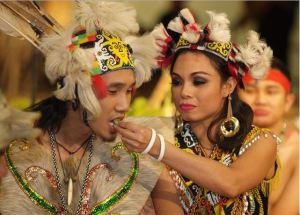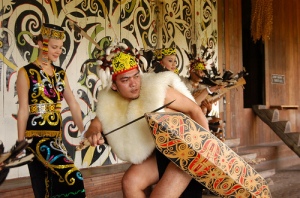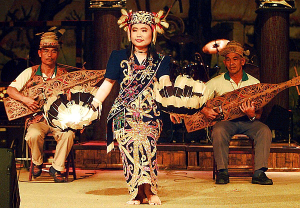Malaysia is a multi-racial country. The country dominant by the three main ethnicities – Malays, Chinese and Indians which blend of traditions and cultures that structure the mainstream of Malaysia’s inhabitants. Besides that, Punjabis differentiate themselves from the Indian ethic group as for their origin and cultural differences. In addition there are minority percentages of indigenous ethnic peoples, mainly in East Malaysia which are Sabah and Sarawak. The largest indigenous ethnic groups of Sabah’s population are the Kadazan Dusun, the Bajau and the Murut. Whereas in Sarawak, the major ethnic groups are the Dayaks, the Iban, Bidayuh and Orang Ulu. In Malacca, The Peranakan and Portuguese descendants are the result of the state’s long history with trading and colonization by Oriental and Western powers. These Portuguese and Peranakan culture that is still practiced by a few descendant communities make up a colourful culture in Malacca.
Even though these races, and diverse ethnic groups, have noticeably different traditions and cultures, Malaysia’s peoples gets along swimmingly. Whether it’s due to the relaxed and liberal strength of mind of the people or as of the reality that the country is an attractive and tranquil land is anyone’s presumption. Malaysia people are friendly and warm; it is shown to you with the lovely smiles on their face everywhere you go.
Malays
Malays are the majority ethnic group in Malaysia and compose the largest population that resides in the outskirts and areas just outside the city. They are constitutionally Muslims and were habitually fishermen and farmers originating from Palembang in Sumatra. They speak Bahasa Malaysia – the national language which is similar to Indonesia.
Malays have a rich legacy in weaving wooden handicrafts and fabrics, much apparent in Malay-centric states such as Kelantan and Terengganu. Malays as well dominate the political scene and form the bulk of Parliament in Malaysia.
The Chinese
The earlier Chinese have come to Malaysia since the 15th Century, but it was only in the late 18th Century that they came in mass to Malaysia from Guangdong and Fujian in China to work the flourishing tin industry. Most of them settled in Kuala Lumpur and make the city as successful it is today. Among the Chinese community, you will discover many different dialects however the common dialect in Kuala Lumpur is Cantonese, followed by Hokkien.
The economy of Malaysia is dominant by Chinese, as in Kuala Lumpur, this is evident by the big number of Chinese inhabiting the city areas. The Chinese are known for their colourful traditions and customs especially for the period of the Chinese New Year. During the Chinese New Year, they have fantastic Lion Dance and also provide ‘Ang Pows’, which they put in money into the red packets and give to the children and unmarried adult, this is a practice that has carried over to the Malays in Malaysia.
As in today, a lot of Chinese in Kuala Lumpur are English-educated; communicate mainly in English with some Chinese dialects in between. The Chinese as well pride themselves on excellent education, and to bridge the divide between local dialects, use Mandarin as the medium of teaching and communication. Majority of Chinese are involved with the commercial business and corporate sector of Malaysia.
Image Sources: tescoplc, jb-tionghua.org.my
Indians
The third largest races in Malaysia are Indian, and a significant number of them are located in Kuala Lumpur. Originating from Southern India, most Indians are Hinduism belief and speak Hindi or Tamil. Most of their traditions and customs are intricately tied with their religion. Therefore, throughout the Hindu festivals like Deepavali, Indians will carry out colourful rites and visit to temples. They were estate workers for tapping rubber when they first landed in Malaysia. Today, numerous of Indians are involved in the business sector, particularly in restaurants and money changers.
Image Sources: soultravelers3, diwali-celebrations.blogspot.com, youtube, arounddeglobe
Punjabis
Originating from the Punjab region, the Punjabis are an ethnic group in Malaysia. In the Punjabi community, the male is known as ‘Sikh’ and the female is known as ‘Kaur’. Known for their colourful culture, Bhangra is a traditional Punjabi musical art form that is growing in popularity around the world. Their traditional costumes consist of a ‘baana’ or ‘kurta’ for the male – usually worn with a turban – and a Punjabi suit or ‘lenga’ for the female. The Punjabis celebrate Vaisakhi, the Sikh’s New Year and Harvest Festival.
![9th Annual HSBC City of Bhangra Festival largest festival of its kind in North American, celebrating the vibrant world of Bhangra through music, dance and discussion. submitted photo, no photo IDs [PNG Merlin Archive]](https://iroamingholiday.files.wordpress.com/2015/08/heritage-culture-22.jpg?w=300&h=279)
Image Sources: blogs.theprovince.com, macontour.net, youtube
The Baba Nyonyas
Peranakans are descended from Chinese migrants who first came to Malacca many centuries ago. Adopting Malay customs and cultures, theirs is a unique heritage unlike any other. Peranakans are also referred to a ‘Straits Chinese’.
It is still a subject of debate whether the Peranakans actually intermarried with the local Malay population or maintained a pure bloodline, but most are said to be of Hokkien ancestry. ‘Babas’ refer to male Peranakans while ‘Nyonya’ refer to females. Often Nyonya is used to substitute the term ‘Peranakan’ as well. Peranakans also settled in Penang, the only other state than Malacca.
In terms of dressing, the women wear traditional Malay costumes, notably the ‘Baju Kebaya’ a form of blouse woven with silk. Foot-binding, a practice carried over from China, used to be common among the affluent folk but over the centuries, it is no longer practised and for good reason. Perhaps the Peranakan’s most famous legacy is Nyonya food, a fusion of Malay ingredients with Chinese cooking styles. Some of the most popular dishes include ‘Belacan’, ‘Assam Laksa’, ‘Cendol’ and ‘Kuih Talam¡’.
Peranakans speak a dialect of the Malay language called ‘Baba Malay’ which has some elements of the Hokkien language. Their most notable musical entertainment form is the ‘Dondang Sayang’; or ‘Love Song’ where Babas and Nyonyas exchanged poems in a humorous style, accompanied by a violin, accordion and traditional instruments; the Rebana and Gong. Many Malaccans, regarded less of their ethnicity, often indulge in Dondang Sayang; such is its popularity.
Image Sources: xinhuanet, thestar, nazein, naughtynyonya blog
The Portuguese
When the Portuguese conquered Malacca in 1511 and ruled for 130 years, a few stayed behind and formed a fishing community that has lasted till today. As devout Catholics, they celebrate various festivals dedicated to their religion which can be witnessed throughout the year in their settlement the Portuguese Square.
Over the years, the Portuguese intermarried with the local population and are now collectively referred to as Portuguese-Eurasian or ‘Kristang’, but they still maintain their traditional surnames such as ‘Sequiera’ and ‘Lopez’. Usually, they speak a distinct language which is a Creole (fusion of two languages) based on Portuguese and Malay.
The Portuguese community in Malacca is a merry bunch, often celebrating with loud dances, music and song. Their most famous tune is the ‘Jinggling Nyonya’, a happy dance-song routine. They’ve also brought their food; ‘Curry Debel¡’ is among the most famous of their dishes.
In June, the Portuguese Suare becomes abuzz with activity as the villagers celebrate a feast in honour of their patron saint. It is truly a sight for visitors to behold and a great chance to get to know this special 3,000-odd group of people in Malaysia.
Source: Malacca.ws
Kadazan Dusun
The largest ethnic group of Sabah, the Kadazan Dusuns form about 30% of the state’s population. Actually consisting of two tribes; the Kadazan and the Dusun, they were grouped together as they both share the same language and culture. However, the Kadazan are mainly inhabitants of flat valley deltas, which are conducive to paddy field farming, while the Dusun traditionally lived in the hilly and mountainous regions of interior Sabah.
Image Sources: kk-carrental-tour.com, killjols blog, bmpengurusan2010.blogspot.com, dpmsisterschool.blogspot.com, sabah.edu.my
Bajau
The second largest ethnic group in Sabah, the Bajaus make up about 15% of the state’s population. Historically a nomadic sea-faring people that worshipped the Omboh Dilaut or God of the Sea, they are sometimes referred to as the Sea Gypsies. Those who chose to leave their sea-faring ways became farmers and cattle-breeders. These land Bajaus are nicknamed ‘Cowboys of the East’ in tribute to their impressive equestrian skills, which are publicly displayed in the annual Tamu Besar festival at Kota Belud.
Image Sources: blogzzpejuangbangsa blog, sabah.edu.my, flickr, ethnicabudaya blog, etawau.com
Murut
The third largest ethnic group in Sabah the Muruts make up about 3% of the state’s population. Traditionally inhabiting the northern inland regions of Borneo, they were the last of Sabah’s ethnic groups to renounce headhunting. Now, they are mostly shifting cultivators of hill paddy and tapioca, supplementing their diet with blowpipe hunting and fishing. Like most indigenous tribes in Sabah, their traditional clothing is decorated with distinctive beadwork.
Image Sources: freemalaysiatoday.com, flickr, youtube, fly2sabah.com
Iban
The largest of Sarawak’s ethnic groups, the Ibans form 30% of the State’s population of 2.5 million. Sometimes erroneously referred to as the Sea Dayaks because of their skill with boats, they are actually an upriver tribe from the heart of Kalimantan. In the past, they were a fearsome warrior race renowned for headhunting and piracy. Traditionally, they worship a triumvirate of gods under the authority of Singalang Burung, the bird-god of war. Even now mostly Christians, many traditional customs are still practised.
Image Sources: eyeonborneo.wordpress.com, tourismmalaysiausa.com, dayakwithgoldenhair.wordpress.com, inducustoms.wordpress.com, thestar.com.my
Bidayuh
Peace-loving and easy-going, the gentle Bidayuh are famous for their hospitality and tuak or rice wine. Making their homes in Sarawak’s southern regions, they are mostly farmers and hunters. In their past headhunting days their prized skulls were stored in a ‘baruk‘, a roundhouse that rises about 1.5 metres above the ground. Originally animists, now most of the 200,000 strong population have converted to Christianity.
Image Sources: dbna.org.my
Melanau
Some 130,000 or 6% of the population of Sarawak are Melanau, believed to be among the original people to settle in Sarawak. Their language has different origins to the other ethnic groups of the state and today they are found mainly along the rivers and coastal plains of central Sarawak. Originally animists most have converted to Islam although some of the inland communities are Christian.
Image Sources: learn-melanau blog, azgforever.wordpress.com
Orang Ulu
27 of the inland tribal groups of Sarawak are collectively called Orang Ulu or upriver people. A total estimated population of around 100,000 people belongs to tribes varied in size from 300 to 25,000 individuals.
Arguably Borneo’s most artistic people, their large longhouses are ornately decorated with murals and superb woodcarvings; their utensils are embellished with intricate beadwork. Traditional tattoos are a very important part of their culture; aristocratic Orang Ulu ladies also cover their arms and legs with finely detailed tattoos.
The aboriginal Penan people are also included as Orang Ulu by government census but the Penan are traditionally nomadic people living in small family groups constantly moving from place to place within the rainforest. Today most of the estimated 16,000 Penan people have settled in longhouse communities where their children have the chance to go to school. Like the Iban and Bidayuh, most of the Orang Ulu has converted from animism to Christianity or Islam.
Sources: malacca.ws, tourism.gov.my
Image Sources: abunsuianyit blog, themalaysiantimes.com.my, thestar, blog.malaysia-asia.my


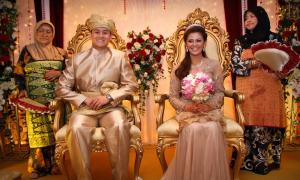
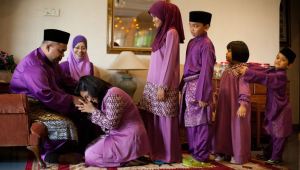


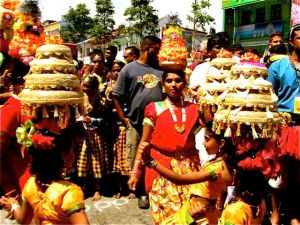
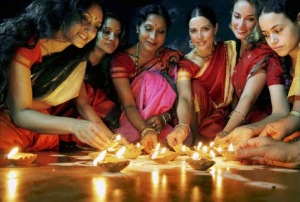
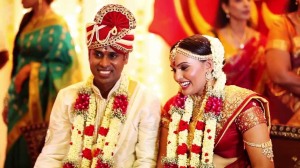
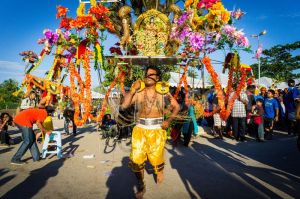
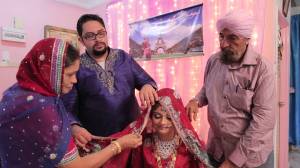
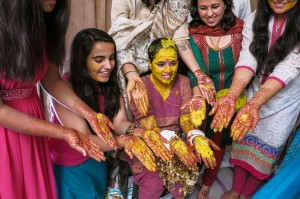
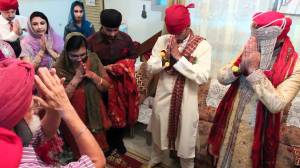
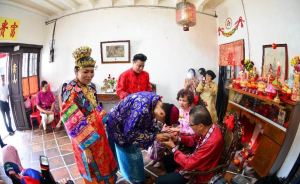
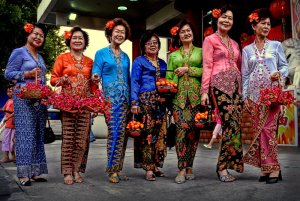
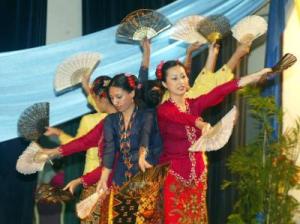
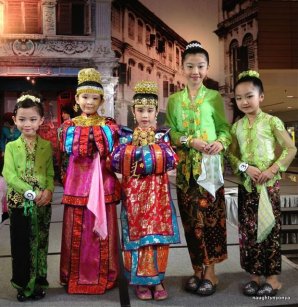
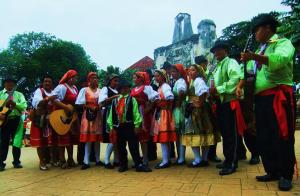
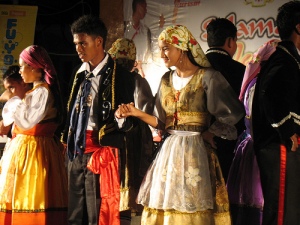
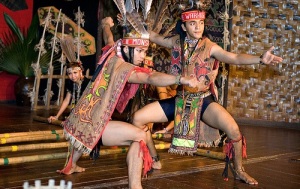
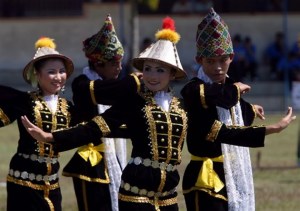
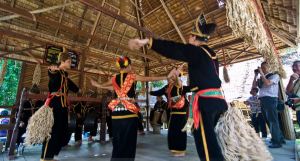
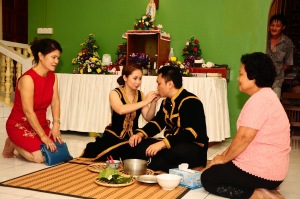
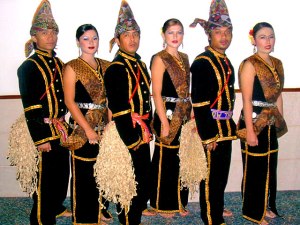
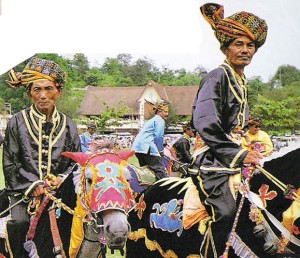
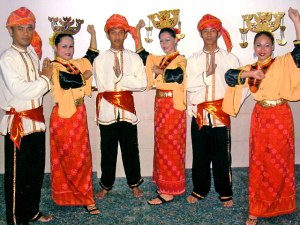
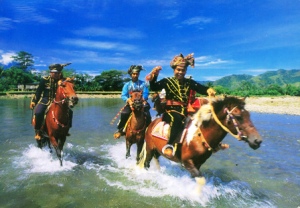
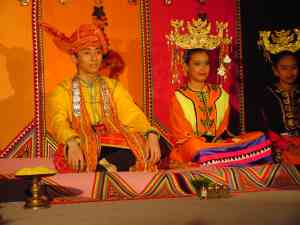
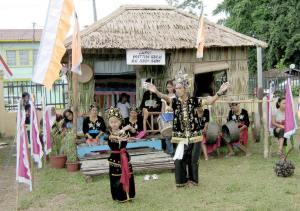
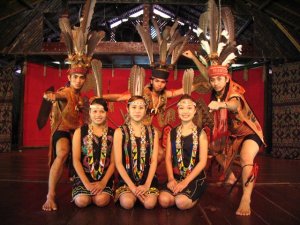
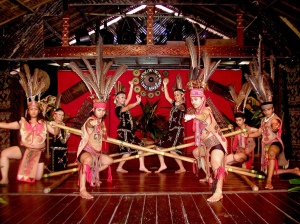

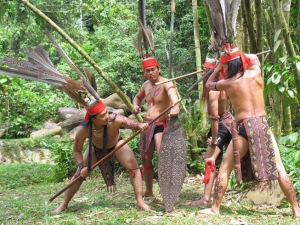
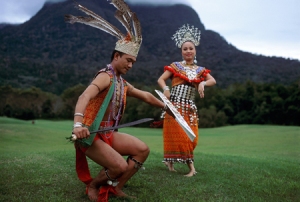
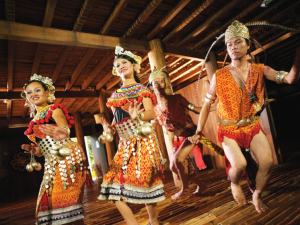
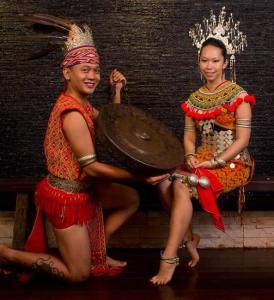

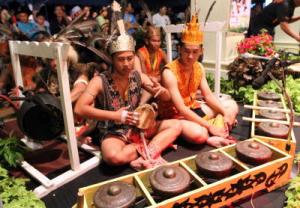
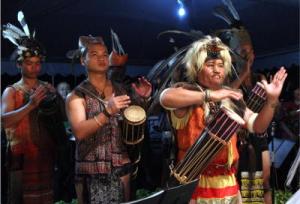



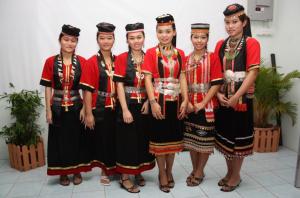
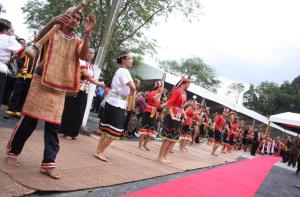
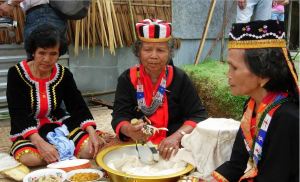
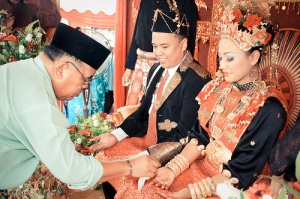
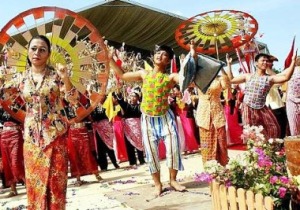

![Camera: DCS520C Serial #: K520C-02788 Width: 1728 Height: 1152 Date: 14/3/03 Time: 11:51:27 DCS5XX Image FW Ver: 3.2.3 TIFF Image Look: Product Sharpening Requested: No Counter: [102594] ISO Speed: 400 Aperture: f2.8 Shutter: 1/250 Max Aperture: f2.8 Min Aperture: f32 Exposure Mode: Aperture priority AE (Av) Compensation: -0.3 Flash Compensation: +0.0 Meter Mode: Partial Flash Mode: No flash Drive Mode: Continuous Focus Mode: AI Servo Focus Point: --o-- Focal Length (mm): 110 White balance: Preset (Tungsten) Time: 11:51:27.166](https://iroamingholiday.files.wordpress.com/2015/08/pic-419.jpg?w=300&h=210)
